Source (Google.com.pk)
Latest Pakistani Bridal Dress Biography

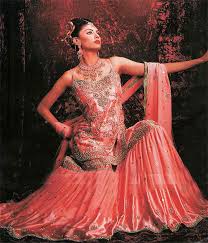
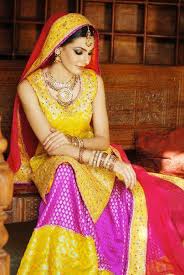

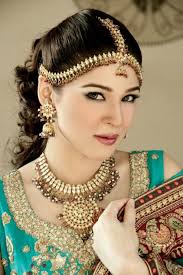

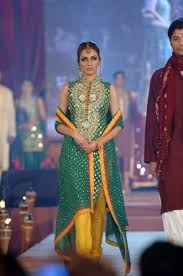
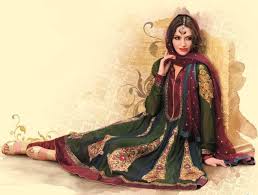


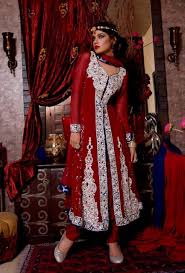

Latest Pakistani Bridal Dress Biography
Nida Azwer has been designing and working in fashion under the aegis of
her eponymous label since 2005, only one month after she graduated from
the prestigious Indus Valley School of Art & Architecture. Her label
includes a Prêt a Porter line, Haute Couture and Bridal lines.
Nida herself was nominated for the coveted Lux Style Award for Best Emerging Talent in 2008 and won the best designer award at the Nesvita Women of Strength Awards in 2009. The same year Nida held her debut solo show in Karachi, featuring both Prêt a Porter and Haute Couture to the acclaim of press, fashionistas and industry stalwarts alike.
She has showcased at three PFDC Sunsilk Fashion Weeks most recently in Karachi in October 2011 and at Fashion Pakistan Week in 2010 to critical acclaim. Nida Azwer presented her bridal wear collection entitled the ‘Awadh Court Collection’ at the PFDC L’Oréal Paris Bridal Week in December 2011. This was the first instance where the designer brought her menswear collection to the ramp. Recently, Nida Azwer presented her semi formal collection entitled “Parinda” at Showcase 2012.
Nida Azwer’s label has come to be recognized for the designers’ love of more classic and vintage design elements infused with our traditional crafts such as ‘tukri ka kaam’, ‘rilli’, ‘kantha’, ‘zardozi’ and ‘miniature embroidery’ worked into contemporary fashion silhouettes manifest in the collections she has showcased at her debut solo show and across various fashion weeks and exhibits. In August 2010, Nida Azwer exhibited “The Silent Weave” collection which brought to her design palette, one of the oldest weaves known to the artistic textile world, Jamdani which originates from the Bengali tradition.
In 2011 Nida Azwer showcased her collection entitled “The Running Stitch” at a charity fashion show to much appreciation. This incorporated the exquisite weave of ‘Kantha’, which stems from West Bengal, in florals and geometric motifs.
In July 2011, Nida diversified her label by launching “Kids by Nida Azwer”, an exclusive line of formal prêt a porter for boys and girls from the ages of three months to twelve years in addition to exhibiting her latest summer collection for 2011. In a further organic extension, the fashion house will also be formally launching a prêt a porter Men’s Wear line this year.
Everything made under the Nida Azwer label is hand-worked in Pakistan using only pure fabrics including Irish linen, chiffons, hand-woven silks and brocade. Indeed Nida Azwer is best known for infusing her label with attention to detail, innovative cuts, silhouettes and tailoring.
Outside of Western countries, brides most commonly wear national dress. White wedding dresses are particularly uncommon in Asian traditions, because white is the color of mourning and death in those cultures. In many Asian cultures, red is usual for brides, as this colour indicates vibrance and health and has over time been associated with brides. However in modern times other colours may be worn, or Western styles preferred. Regardless of colour in most Asian cultures bridal clothes are highly decorative, often covered with embroidery, beading or gold. In some traditions brides may wear more than one outfit, this is true for example in Japan, parts of India, and, archaically, in parts of the Arab world.
Nida herself was nominated for the coveted Lux Style Award for Best Emerging Talent in 2008 and won the best designer award at the Nesvita Women of Strength Awards in 2009. The same year Nida held her debut solo show in Karachi, featuring both Prêt a Porter and Haute Couture to the acclaim of press, fashionistas and industry stalwarts alike.
She has showcased at three PFDC Sunsilk Fashion Weeks most recently in Karachi in October 2011 and at Fashion Pakistan Week in 2010 to critical acclaim. Nida Azwer presented her bridal wear collection entitled the ‘Awadh Court Collection’ at the PFDC L’Oréal Paris Bridal Week in December 2011. This was the first instance where the designer brought her menswear collection to the ramp. Recently, Nida Azwer presented her semi formal collection entitled “Parinda” at Showcase 2012.
Nida Azwer’s label has come to be recognized for the designers’ love of more classic and vintage design elements infused with our traditional crafts such as ‘tukri ka kaam’, ‘rilli’, ‘kantha’, ‘zardozi’ and ‘miniature embroidery’ worked into contemporary fashion silhouettes manifest in the collections she has showcased at her debut solo show and across various fashion weeks and exhibits. In August 2010, Nida Azwer exhibited “The Silent Weave” collection which brought to her design palette, one of the oldest weaves known to the artistic textile world, Jamdani which originates from the Bengali tradition.
In 2011 Nida Azwer showcased her collection entitled “The Running Stitch” at a charity fashion show to much appreciation. This incorporated the exquisite weave of ‘Kantha’, which stems from West Bengal, in florals and geometric motifs.
In July 2011, Nida diversified her label by launching “Kids by Nida Azwer”, an exclusive line of formal prêt a porter for boys and girls from the ages of three months to twelve years in addition to exhibiting her latest summer collection for 2011. In a further organic extension, the fashion house will also be formally launching a prêt a porter Men’s Wear line this year.
Everything made under the Nida Azwer label is hand-worked in Pakistan using only pure fabrics including Irish linen, chiffons, hand-woven silks and brocade. Indeed Nida Azwer is best known for infusing her label with attention to detail, innovative cuts, silhouettes and tailoring.
Outside of Western countries, brides most commonly wear national dress. White wedding dresses are particularly uncommon in Asian traditions, because white is the color of mourning and death in those cultures. In many Asian cultures, red is usual for brides, as this colour indicates vibrance and health and has over time been associated with brides. However in modern times other colours may be worn, or Western styles preferred. Regardless of colour in most Asian cultures bridal clothes are highly decorative, often covered with embroidery, beading or gold. In some traditions brides may wear more than one outfit, this is true for example in Japan, parts of India, and, archaically, in parts of the Arab world.
Latest Pakistani Bridal Dress
Latest Pakistani Bridal Dress
Latest Pakistani Bridal Dress
Latest Pakistani Bridal Dress
Latest Pakistani Bridal Dress
Latest Pakistani Bridal Dress
Latest Pakistani Bridal Dress
Latest Pakistani Bridal Dress
Latest Pakistani Bridal Dress
Latest Pakistani Bridal Dress
Latest Pakistani Bridal Dress
Latest Pakistani Bridal Dress
Latest Pakistani Bridal Dress
No comments:
Post a Comment